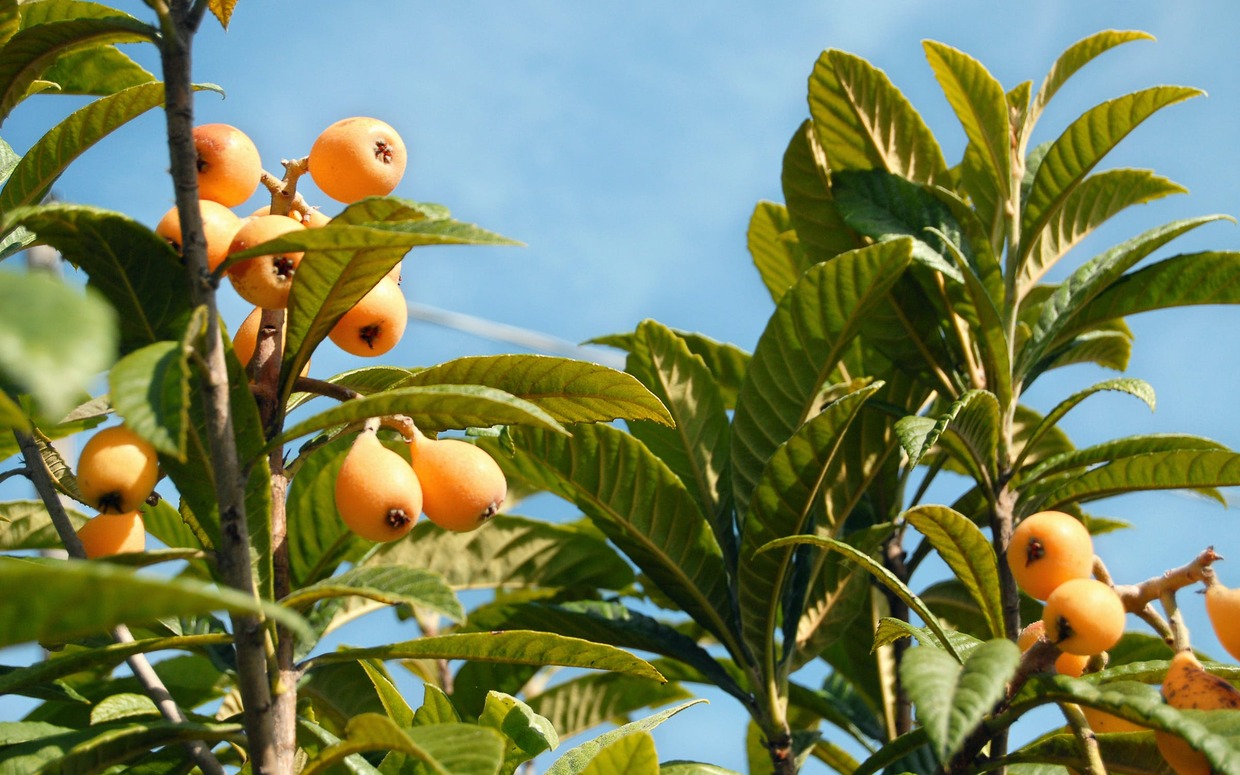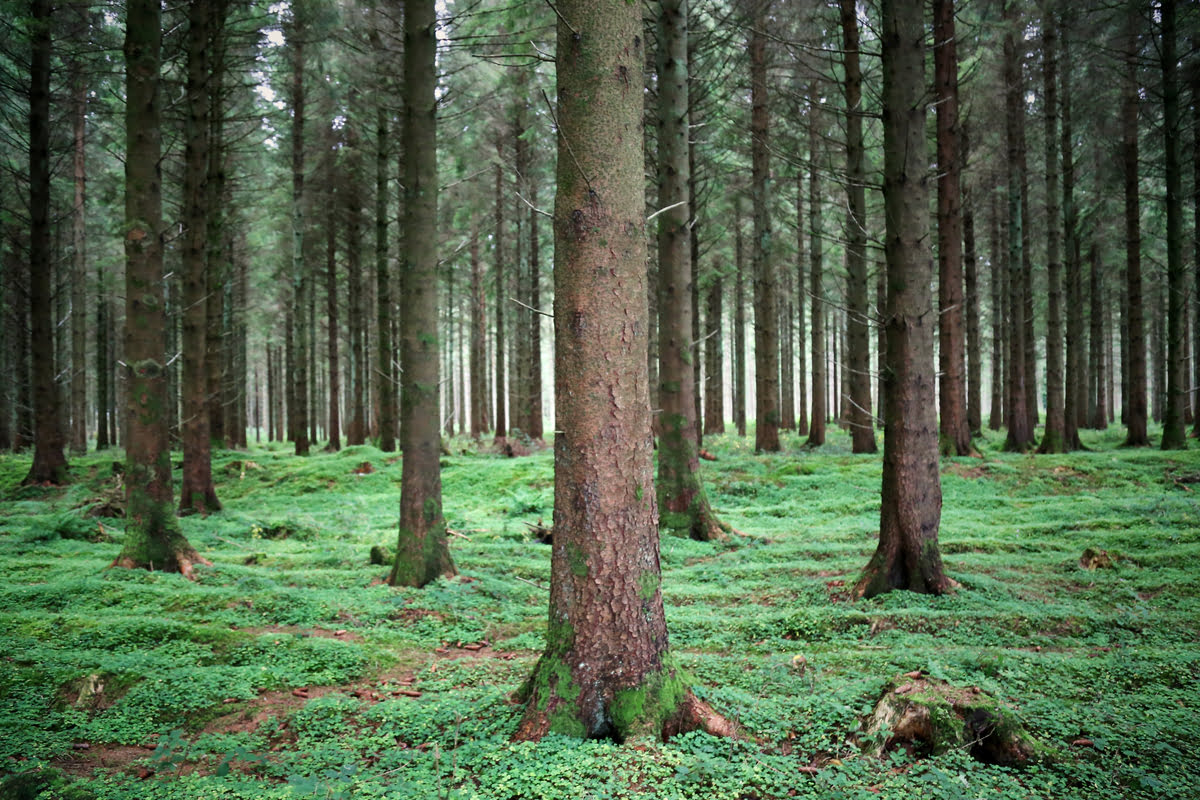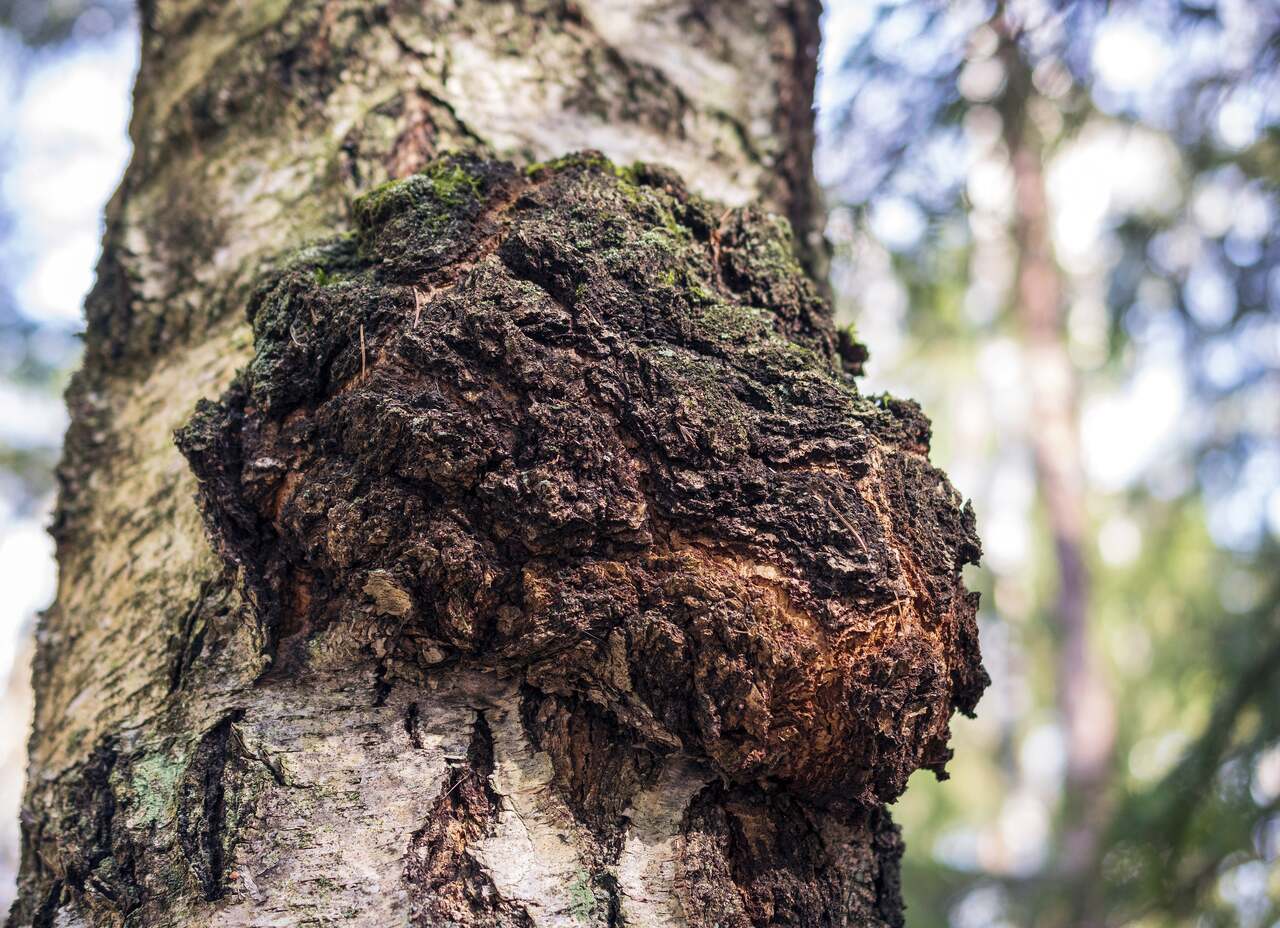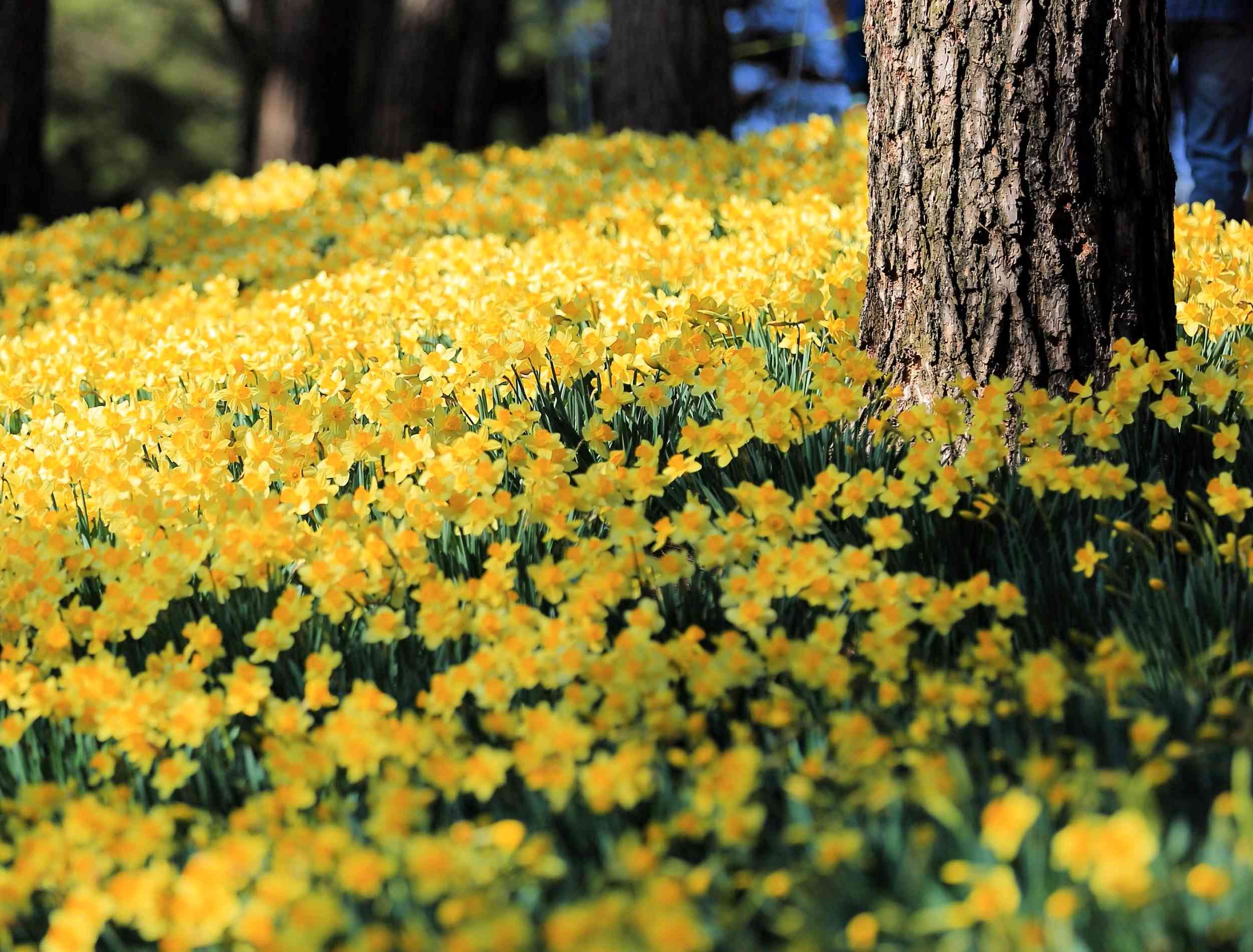Home>Types of Gardening>Ornamental Gardening>What Are The Fastest Growing Trees
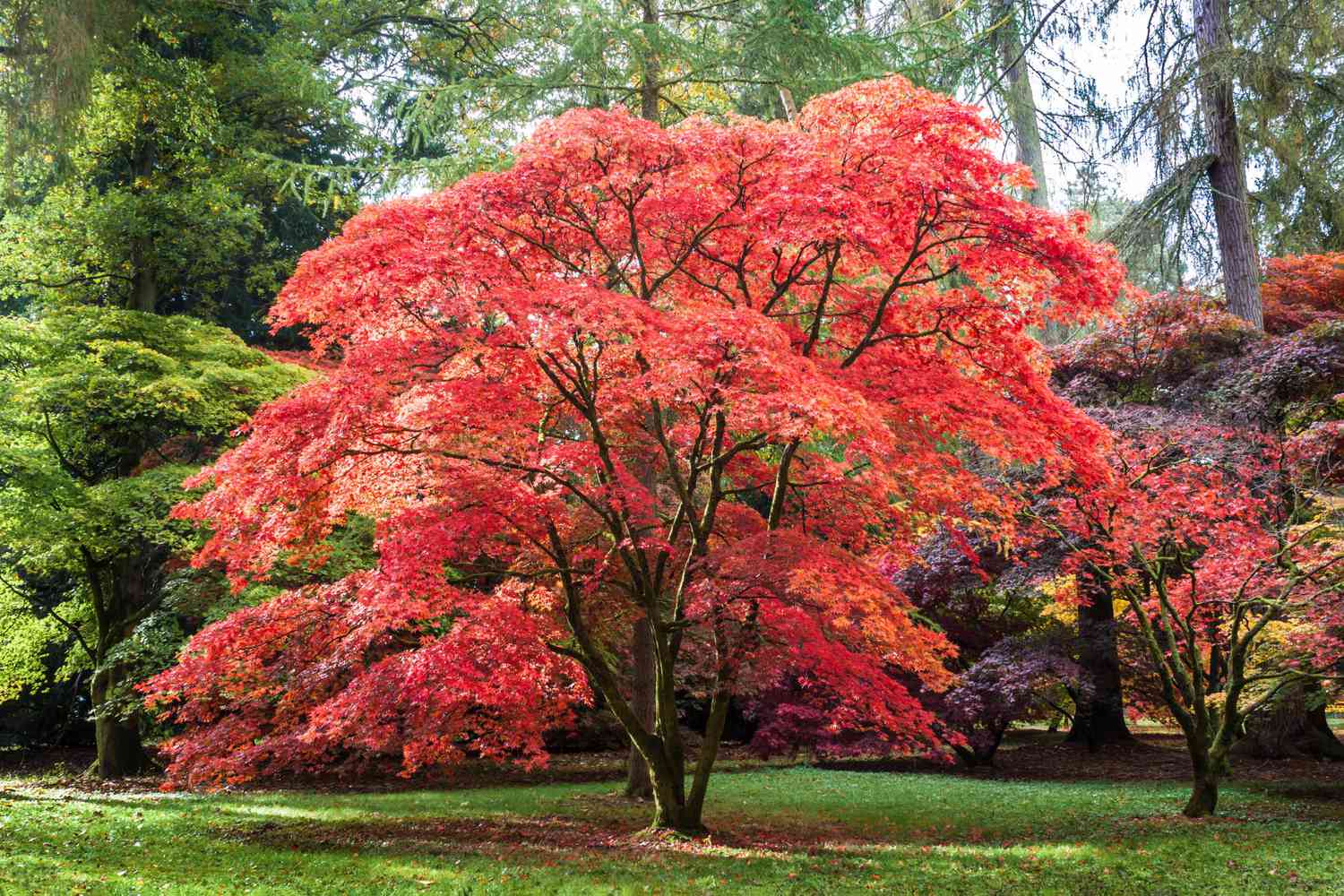

Ornamental Gardening
What Are The Fastest Growing Trees
Modified: January 22, 2024
Discover the fastest growing trees for your ornamental gardening needs. Enhance your landscape with these stunning and rapidly growing trees.
(Many of the links in this article redirect to a specific reviewed product. Your purchase of these products through affiliate links helps to generate commission for Chicagolandgardening.com, at no extra cost. Learn more)
Table of Contents
- Introduction
- Benefits of Fast-Growing Trees
- Factors That Impact Tree Growth Rate
- The Fastest Growing Trees in North America
- The Fastest Growing Trees for Shade
- The Fastest Growing Trees for Privacy
- The Fastest Growing Fruit Trees
- The Fastest Growing Trees for Timber Production
- Environmental Considerations for Fast-Growing Trees
- Conclusion
Introduction
Welcome to the world of ornamental gardening, where beauty and creativity merge to transform outdoor spaces into captivating oases. One key element that adds charm and character to any garden is the presence of trees. Not only do trees provide shade, privacy, and a natural backdrop, but they also have the remarkable ability to grow and evolve over time.
In this article, we will explore the fascinating realm of fast-growing trees. These arboreal wonders can sprout from a mere sapling to a towering beauty in a relatively short span of time. Whether you are looking to create a lush green canopy or simply want to expedite the growth of fruit trees, the world of fast-growing trees holds endless possibilities.
Fast-growing trees offer numerous benefits, making them a popular choice among garden enthusiasts. They provide quick privacy for those seeking to create a secluded oasis in their backyard. Additionally, their rapid growth rate can result in a bountiful harvest of fruits, nuts, or timber.
However, it’s important to understand that various factors influence the growth rate of trees. Climate, soil conditions, sunlight exposure, and proper care are some of the key elements that impact a tree’s robustness and speed of growth.
Throughout this article, we will delve into the fastest-growing trees in North America, explore options for shade and privacy, discover the speediest fruit trees, and even touch on the possibilities for timber production. We will also highlight the environmental considerations associated with fast-growing trees, as sustainability plays a crucial role in modern gardening practices.
So, buckle up and embark on this journey into the world of fast-growing trees. Whether you’re a seasoned gardener or just starting to explore the wonders of ornamental gardening, this article will provide you with valuable insights and inspiration to transform your outdoor space into a vibrant and thriving haven.
Benefits of Fast-Growing Trees
Fast-growing trees offer a multitude of benefits that make them an attractive choice for gardeners and homeowners alike. Let’s explore some of the advantages that these rapid-growth wonders bring to our outdoor spaces:
- Quick Privacy: One of the primary reasons people opt for fast-growing trees is to establish privacy in their backyard. These trees provide a natural barrier, shielding your property from prying eyes and creating a serene and secluded environment.
- Shade and Cooling: Fast-growing trees can quickly develop into towering beauties, casting ample shade over your outdoor space. This shade not only offers relief from the scorching sun in the summer but can also help cool the surrounding area, reducing the need for excessive air conditioning.
- Aesthetics and Landscaping: Trees are the backbone of any well-designed outdoor space. Fast-growing trees can rapidly transform a dull and uninspiring landscape into a lush and vibrant masterpiece. They add dimension, texture, and a sense of maturity, enhancing the overall aesthetics of your garden.
- Wildlife Habitat: Trees provide a valuable habitat for a wide array of wildlife, including birds, squirrels, butterflies, and beneficial insects. Fast-growing trees can quickly create a thriving ecosystem, attracting these creatures to your garden and adding an element of biodiversity.
- Fruit and Nut Production: For those with a passion for growing their own food, fast-growing fruit and nut trees are an excellent choice. These trees can yield a bountiful harvest in a relatively short period, allowing you to enjoy homegrown fruits and nuts without having to wait for years.
- Timber and Wood Production: Fast-growing trees can also serve as a sustainable source of timber and wood products. With proper planning and management, these trees can be harvested for construction materials, furniture, or firewood, providing a renewable and environmentally friendly resource.
- Environmental Benefits: Trees play a vital role in mitigating the impacts of climate change, absorbing carbon dioxide and releasing oxygen. Fast-growing trees, with their rapid growth rates, can contribute to reducing greenhouse gas levels and improving air quality in your surroundings.
As you can see, the benefits of fast-growing trees are many and varied. Whether you’re looking for privacy, shade, aesthetic appeal, or sustainable resources, these trees have you covered. However, it’s essential to consider the specific requirements of each tree species and ensure they align with your garden’s overall vision and environmental conditions.
Factors That Impact Tree Growth Rate
While fast-growing trees have the ability to soar to great heights in a short period, it’s important to note that several factors can influence their growth rate. Understanding these factors will help you make informed choices when selecting and caring for your trees. Here are some key elements that impact tree growth:
- Climate: The climate in which a tree is grown plays a significant role in its growth rate. Some tree species thrive in specific climates, while others may struggle or even fail to survive. Factors such as temperature, precipitation, and sunlight availability can significantly impact a tree’s growth potential.
- Soil Conditions: The quality and composition of the soil directly influence a tree’s ability to absorb nutrients, water, and oxygen. Trees prefer well-drained soil with a balanced pH level. Soil fertility, texture, and organic matter content are also important considerations that impact tree growth rate.
- Water Availability: Sufficient water is crucial for a tree’s growth and overall health. Different tree species have varying water requirements, and it’s essential to provide adequate irrigation during dry periods or in regions with limited rainfall. Lack of water can stunt a tree’s growth or lead to withering and eventual death.
- Sunlight Exposure: Trees, like all plants, need sunlight to carry out photosynthesis, which is vital for growth and development. The intensity and duration of sunlight a tree receives can affect its growth rate. Some species thrive in full sun, while others prefer partial shade. Proper placement and understanding of a tree’s sunlight requirements are essential for optimal growth.
- Species and Genetics: Each tree species has its inherent growth rate and potential. Some naturally grow faster than others due to their genetic makeup. When selecting fast-growing trees, it’s important to consider their specific species and understand their growth characteristics and requirements.
- Pruning and Maintenance: Proper pruning techniques and regular maintenance can significantly impact a tree’s growth rate. Pruning helps shape the tree, remove dead or diseased branches, and promote healthy growth. Regular maintenance, such as fertilizing and pest control, ensures the tree receives the necessary nutrients and protection from potential threats.
It’s crucial to note that while these factors influence tree growth, they are not absolute predictors. Each tree is unique, and its growth may vary based on these factors and other individual characteristics. Understanding and addressing these factors will help you create optimal conditions for your fast-growing trees, ensuring they reach their full potential and flourish in your garden.
The Fastest Growing Trees in North America
North America is home to a wide variety of fast-growing trees that can flourish in diverse climates and soil conditions. If you’re looking to add some swift-growing beauties to your garden, consider these rapid-growth champions:
- Hybrid Poplar (Populus spp.): Hybrid poplar trees are known for their impressive growth rates, often growing more than six feet per year. They are adaptable to different soil types and climates, making them a popular choice for reforestation and timber production.
- Quaking Aspen (Populus tremuloides): Quaking aspens are renowned for their rapid growth and beautiful, quivering leaves. They can grow up to two feet per year and are often used in windbreaks and erosion control due to their extensive root systems.
- Silver Maple (Acer saccharinum): Silver maple trees are known for their stunning silver-gray bark and vibrant fall foliage. They can grow up to three feet per year and are adaptable to a wide range of soil conditions, making them a popular choice for shade and ornamental purposes.
- Royal Empress (Paulownia tomentosa): The royal empress tree is a fast-growing marvel, capable of growing up to eight feet per year under ideal conditions. It features large, heart-shaped leaves and produces beautiful purple flowers in the spring.
- Lombardy Poplar (Populus nigra ‘Italica’): The Lombardy poplar, with its distinctive columnar shape, is another rapid-growing tree. It can grow up to six feet per year and is often used in landscaping for its dramatic vertical presence.
- Red Push Pistache (Pistacia x ‘Red Push’): This deciduous tree boasts vibrant foliage and remarkable drought tolerance. It can grow up to three feet per year and is suitable for adding color and shade to dry and arid regions.
These are just a few examples of the fast-growing tree species that grace the landscapes of North America. While their rapid growth is a remarkable feature, it’s important to consider their specific requirements and growth characteristics before planting them in your garden. By selecting the right tree for your climate and providing proper care, you can enjoy their swift growth and captivating beauty for years to come.
The Fastest Growing Trees for Shade
Creating a shady retreat in your garden is essential for enjoying outdoor activities during hot summer months. If you’re looking to establish a shady oasis quickly, consider these fast-growing trees known for their ability to provide ample shade:
- Empress Tree (Paulownia tomentosa): The Empress tree is not only known for its rapid growth but also for its large, heart-shaped leaves that create a dense shade canopy. It can grow up to eight feet per year and provides excellent shade for picnics, outdoor gatherings, or simply relaxing under its lush foliage.
- Black Walnut (Juglans nigra): Black walnut trees are valued for their beautiful hardwood as well as their ability to provide shade. They can grow up to one to three feet per year and feature a broad and spreading canopy that offers relief from the sun’s harsh rays.
- Weeping Willow (Salix babylonica): Weeping willow trees are iconic for their graceful, cascading branches that create a serene shade. They can grow up to four feet per year, and their long and sweeping branches create a beautiful, weeping canopy that provides cool shade for relaxation and contemplation.
- Red Maple (Acer rubrum): Red maple trees are renowned for their stunning fall foliage, but they also make excellent shade trees. They can grow up to two to three feet per year, producing a dense canopy that provides shade and relief from the summer heat.
- Pin Oak (Quercus palustris): Pin oak trees are known for their fast growth and broad spreading crown, making them excellent shade providers. They can grow up to two to three feet per year and their dense foliage offers a cool and refreshing shade during hot summer days.
- Sycamore (Platanus occidentalis): Sycamore trees are not only massive and majestic but also fast-growing. They can grow up to three feet per year and their wide-spreading branches create a dense shade, making them a popular choice for shade-loving species.
These fast-growing trees for shade will not only provide relief from the scorching sun but will also enhance the aesthetics of your garden with their beautiful foliage and grand presence. Remember to consider the specific requirements of each tree species before planting and provide proper care to ensure their healthy growth and longevity.
The Fastest Growing Trees for Privacy
Establishing privacy in your outdoor space is essential for creating a tranquil and secluded environment. If you’re looking to create a private oasis quickly, consider these fast-growing trees that are known for their ability to provide privacy:
- Thuja Green Giant (Thuja plicata): The Thuja Green Giant is a popular choice for creating privacy barriers due to its rapid growth rate and dense foliage. It can grow up to three to five feet per year and forms a thick, evergreen wall that offers year-round privacy.
- Leyland Cypress (Cupressocyparis leylandii): Leyland Cypress is another fast-growing evergreen tree that is often used for privacy screening. It can grow up to three to four feet per year and features feathery, dense foliage that provides excellent privacy and acts as a sound barrier.
- Eastern Red Cedar (Juniperus virginiana): Eastern Red Cedar is a versatile tree that adapts well to different growing conditions. It can grow up to two to three feet per year and its dense, evergreen foliage makes it an ideal choice for privacy hedges and windbreaks.
- Dawn Redwood (Metasequoia glyptostroboides): The Dawn Redwood, though deciduous, is a fast-growing tree that can provide privacy in a relatively short period. It can grow up to two feet per year and its fern-like foliage creates a lush and visually appealing privacy screen.
- Arborvitae (Thuja occidentalis): Arborvitae is a popular choice for privacy fences and hedges due to its dense growth and vibrant green foliage. It can grow up to two feet per year and its compact habit makes it suitable for small or narrow spaces.
- Bamboo (Phyllostachys spp.): Bamboo is a fast-growing plant that can create an instant privacy screen. Some species of bamboo can grow up to three to five feet per year, forming a dense and visually striking barrier.
These fast-growing trees and plants for privacy will quickly shield your outdoor space from prying eyes, adding a sense of security and seclusion. However, remember to consider the specific requirements of each species and provide appropriate maintenance to ensure healthy growth and longevity.
The Fastest Growing Fruit Trees
Growing your own fruits can be a rewarding and delicious endeavor. If you’re eager to enjoy homegrown fruits in a short period, consider these fast-growing fruit trees that will quickly provide you with a bountiful harvest:
- Apple Trees (Malus spp.): Apple trees are known for their versatility and ability to produce a variety of delicious fruits. Some apple tree varieties, such as the Honeycrisp or Gala, can start bearing fruit within three to four years of planting, providing you with a steady supply of crispy and juicy apples.
- Peach Trees (Prunus persica): Peach trees are renowned for their sweet and juicy fruits that are perfect for eating fresh or baking into delectable desserts. Certain peach tree varieties, like the Elberta or Redhaven, can start producing fruit in just two to three years after planting.
- Plum Trees (Prunus domestica): Plum trees offer a wide range of flavors and colors, from sweet to tart and purple to yellow. Some plum tree varieties, such as the Santa Rosa or Methley, can begin bearing fruit within three to four years and provide you with a delightful harvest of plump and juicy plums.
- Apricot Trees (Prunus armeniaca): Apricot trees are prized for their early-blooming flowers and deliciously sweet fruits. With proper care, certain apricot tree varieties, such as the Goldcot or Moorpark, can start producing fruit within three to four years, allowing you to enjoy the velvety flesh and vibrant flavor of apricots.
- Cherry Trees (Prunus avium/Prunus cerasus): Cherry trees are known for their beautiful flowers and mouthwatering fruits. Some cherry tree varieties, like the Bing or Stella, can begin producing cherries within three to five years after planting, giving you a harvest of sweet and tangy cherries to enjoy.
- Pear Trees (Pyrus spp.): Pear trees are beloved for their juicy and buttery fruits that are perfect for eating fresh or preserving. Certain pear tree varieties, such as the Bartlett or Anjou, can start bearing fruit within three to five years of planting, providing you with a versatile and flavorful crop.
These fast-growing fruit trees will not only add beauty to your garden but also provide you with a plentiful harvest of fresh and tasty fruits. However, ensure that you select the appropriate tree varieties for your specific climate and growing conditions, and follow proper care and maintenance practices to optimize growth and fruit production.
The Fastest Growing Trees for Timber Production
For those interested in timber production and sustainable forestry, fast-growing trees can be a valuable asset. These trees have the potential to yield a significant amount of timber in a relatively short period. Here are some of the fastest-growing trees for timber production:
- Eucalyptus (Eucalyptus spp.): Eucalyptus trees are known for their rapid growth and ability to produce high-quality timber. Depending on the species and growing conditions, eucalyptus trees can reach maturity within 10 to 15 years, making them an attractive option for timber production purposes.
- Black Locust (Robinia pseudoacacia): Black locust trees are valued for their robust growth and durable timber. They can reach maturity in 15 to 20 years and produce dense, hardwood timber that is highly resistant to decay, making it suitable for various construction and outdoor applications.
- Paulownia (Paulownia spp.): Paulownia trees are known for their fast growth and lightweight timber. They can reach maturity within 10 to 15 years, yielding a timber that is popular for furniture making, cabinetry, and other woodworking projects.
- Douglas Fir (Pseudotsuga menziesii): Douglas fir trees are favored for their strong and versatile timber, making them ideal for construction purposes. Although their growth rate is slower compared to some other species, they can still reach maturity within 25 to 40 years, making them relatively fast-growing for a coniferous tree.
- Hybrid Poplar (Populus spp.): Hybrid poplar trees, known for their fast growth, are also suitable for timber production. Depending on the specific hybrid and environmental conditions, they can reach maturity within 10 to 15 years, providing a renewable source of timber for various woodworking applications.
- Sycamore (Platanus spp.): Sycamore trees are admired for their rapid growth and attractive timber. With a growth rate of up to three feet per year, they can reach maturity within two to three decades, providing a valuable source of timber for furniture, flooring, and veneer.
When considering fast-growing trees for timber production, it’s important to choose species that are well-adapted to your region’s climate and soil conditions. Additionally, proper forest management practices, such as regular thinning and sustainable harvesting, are vital to ensure the long-term health and productivity of the timber plantation.
By selecting the right fast-growing trees and implementing responsible forestry practices, you can establish a sustainable timber operation that provides a renewable resource while promoting environmental conservation.
Environmental Considerations for Fast-Growing Trees
While fast-growing trees offer numerous benefits, it is important to consider the potential environmental impacts associated with their cultivation. Here are some key environmental considerations to keep in mind:
- Invasive Potential: Some fast-growing tree species have the potential to become invasive in certain regions. When selecting fast-growing trees, it is crucial to choose non-invasive species that do not pose a threat to native ecosystems. Research and consult with local agricultural extension offices or forestry experts to ensure that the trees you choose are appropriate for your area.
- Water Requirements: Fast-growing trees often have high water demands, especially during their initial growth stages. It is important to consider the water availability in your region and choose tree species that are well-suited to the local climate. Proper irrigation practices, such as mulching and efficient watering techniques, can help conserve water and mitigate potential water-related issues.
- Soil Erosion: The rapid growth of some fast-growing trees may create a dense canopy that can impact soil moisture levels and nutrient cycling. If not properly managed, this can result in soil erosion and nutrient depletion. Implementing erosion control measures, such as using cover crops or installing erosion barriers, can help mitigate these potential issues.
- Wildlife Habitat: While trees provide important habitat for wildlife, fast-growing trees may not offer the same level of habitat quality and biodiversity as slow-growing, native tree species. It is important to consider the potential impact on local wildlife and incorporate native species and diverse plantings to support a wide range of animal species in your landscape.
- Chemical Use: Fast-growing trees may require more frequent fertilization or pest management interventions to maintain their rapid growth rates. It is important to minimize the use of synthetic chemicals and consider organic alternatives to promote ecological balance and reduce potential negative impacts on pollinators, beneficial insects, and the overall ecosystem health.
- Long-Term Sustainability: Fast-growing trees have a shorter lifespan compared to slower-growing tree species. This means that careful planning and management are necessary to ensure the long-term sustainability of your landscape. Consider incorporating a mixture of tree species with different growth rates to achieve a balanced and resilient ecosystem.
By being mindful of these environmental considerations, you can make informed choices when selecting and managing fast-growing trees. Incorporating sustainable practices, such as using native species, conserving water, promoting wildlife habitat, and minimizing chemical use, will help create a harmonious and environmentally friendly garden that benefits both you and the surrounding ecosystem.
Conclusion
Fast-growing trees are a valuable addition to any garden or landscape, providing a range of benefits from shade and privacy to fruit production and timber resources. These trees have the remarkable ability to quickly transform outdoor spaces, adding beauty, functionality, and environmental benefits. However, it is important to consider various factors that impact their growth, such as climate, soil conditions, water availability, and sunlight exposure.
Whether you’re looking for a fast-growing tree to create privacy, add shade, produce delicious fruits, or contribute to sustainable timber production, there are a variety of options to choose from. From the rapid-growth wonders like hybrid poplars and royal empress trees to shade providers like weeping willows and silver maples, there is a fast-growing tree to suit every purpose and design aesthetic.
While benefiting from the rapid growth of these trees, it is crucial to be mindful of the potential environmental considerations associated with their cultivation. Selecting non-invasive species, managing water resources responsibly, preventing soil erosion, promoting wildlife habitat, minimizing chemical usage, and ensuring long-term sustainability are all essential practices to adopt when incorporating fast-growing trees into your landscape.
Embarking on the journey of ornamental gardening and exploring the world of fast-growing trees opens up a world of possibilities. With proper planning, care, and knowledge, you can create a vibrant, lush, and sustainable outdoor space that not only enhances the aesthetics of your property but also contributes positively to the environment.
So, take advantage of the beauty and benefits that fast-growing trees offer. Whether you’re a seasoned gardener or a beginner, these trees will surely bring joy, privacy, shade, delicious fruits, and sustainable resources to your garden for years to come.
